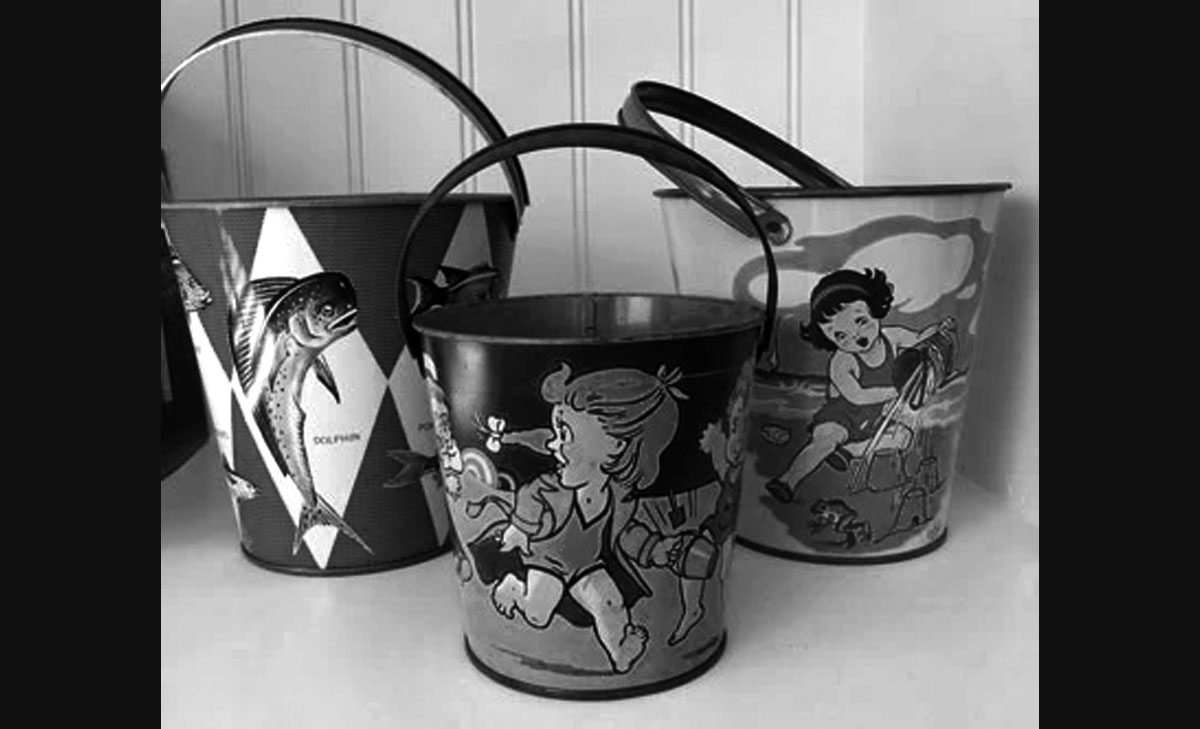Sand pails first gained popularity around 1850, when Victorians began vacationing by the sea. The vivid colors and charming graphics on the tin pails appealed to young boys and girls. At first, sand pails were imported from Europe, but in the late 1800s, American manufacturers began to make their own. Early American-made sand pails were typically embossed, hand painted, stenciled, or stamped. The most popular American sand pails were made by Ohio Art Company, J. Chein & Co., Morton E. Converse & Sons, T. Bros, Wolverine, T. Cohn Incorporated, and U.S. Metal Toy Manufacturing Company. They were at their most popular during the period from the 1930s to the 1960s. During this time, seaside vacations became more popular due to the increased availability of mass transit. The popularity of American-made sand pails peaked in the 1950s, however, and by the 1970s, it had declined sharply. Why? Plastic pails had taken over. Today, vintage sand pails are sought after by collectors. Depending on rarity and condition, they can sell from anywhere between $10 to $1,000!

Your go-to guide for weird history facts
Subscribe to the FREE daily email that makes learning about history fun.


